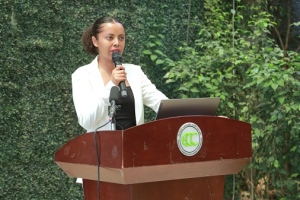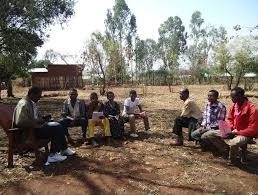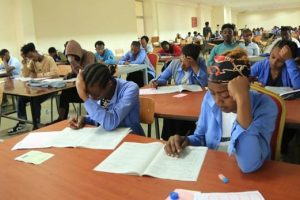
BY MENGISTEAB TESHOME
The East and Horn of Africa (EHoA) region is a region characterized by mixed migration flows- “cross-border movements of people, including refugees fleeing persecution and conflict, victims of trafficking and people who are seeking better lives and opportunities”- that have reached at its highest point due to various factors including disparate intra-regional dynamics.
Yes, labor migration, movement of people from one country to another or across identifiable geographical boundaries has been a common trend and a longstanding experience. And labor migration, conducted for the main purpose of an exchange of labor for remuneration, involving people with diverse socio-demographic characteristics such as age, sex, skills, and educational backgrounds.
Labor migrants move internally, intra-regionally and internationally in search of /employment opportunities so as to improve their own and families’ lives.
According to documents, immigrants in the East and Horn of Africa stood at 6.2 million as of mid- 2020, which represented an 80 percent increase from mid-2000 (3.5 million) and a16 percent increase from mid-2015 (5.4 million).
Almost a quarter (24 percent) of all the international migrants living in Africa reached 25.4 million was in the East and Horn of Africa region. Of the 6.2 million immigrants in the region, the share of females is 50.4 percent was slightly higher than the share of males, which is 49.6 percent.
Meanwhile, the number of estimated emigrants from the region reached 9.1 million at mid-2020, which is more than double the number recorded 10 years earlier at mid-2000 (4.4 million) and a 28 percent increase from mid-2015 (7.1 million).
Of those, 46 percent lived in the region (4.1 million) while 54 percent lived outside the region (4.9 million), mostly in other regions in Africa (42 percent), in Europe (24 percent), in Northern America (18 percent) and in Western Asia, which includes the Cooperation Council for the Arab States of the Gulf (GCC) and Middle Eastern countries (13 percent).
In all, an estimated 68 per cent of emigrants from the EHoA region (or 6.2 million) lived in another African country.
Between January and December 2021, about 674,243 movements were tracked at 70 flow monitoring points in the region, the majority of which (67 percent) were motivated by economic reasons.
Recently a forum, the East African 4th Regional Ministerial Forum on Migration (RMFM), that targets to discuss issues related to labor mobility, gender-sensitive migration governance and regional integration for development and economic growth, was held in Addis Ababa.
The forum was carried out under the theme “Labor Mobility, Migration Governance and Regional Integration in East and Horn of Africa”.
Speaking on the occasion, Minister of Labor and Skills, Muferihat Kamil said that the region is one of the areas challenged by various new problems that need to be addressed and solved urgently. In this regard, there is a need to work in partnership on issues such as labor mobility, migration governance, and regional integration.
As to her, ensuring the free movement of labor in Africa, promoting and sustaining gender-based migration governance and social protection of migrant workers and their families require the collaboration of all stakeholders.

Referring to the data issued by the International Organization for Migration, the Minister said that 48 percent of women who migrate to different countries in the world are Africans. 50.4 percent of the citizens migrating from East Africa are women and children.
This signifies that East African countries should strengthen their cooperation in labor migration policies, the Minister underlined.
International Organization for Migration (IOM), Regional Director of the East and Horn of Africa Director Mohamed Abdikadir, on his part said that over 21 million Africans are living and working in another African country and millions more outside the continent. Labor mobility and labor migration are major drivers of this movement of people across borders in East and Horn of Africa.
Mentioning that the region hosts seven of the fifteen largest intra-continental mobility corridors, he said that mobility and labor migration has immense potential to bring socio-economic benefits to countries of origin and destination,
He also underlined the importance of cooperation between and among different stakeholders and partners. He said cooperation and collaboration between and among the private sector and the Diaspora community is crucial to diminish the illegal migration.
The Director also affirmed that IOM and its partners stand ready to work closely with all of the member states in order to achieve the necessary reforms.
In an exclusive interview with The Ethiopia Herald Labor Migration Project ILO Program Manager Aida Awel said that the 4th Regional Ministerial Forum on Migration (RMFM) is instrumental to addressing the pressing challenge of migrations in the region and responding in a more established fashion.
Aida noted that the RMFM’s work is guided by the relevant regional and global initiatives to addressing migration, such as the Africa 2063 Agenda, AU Free Movement Protocol, the Revised Migration Policy Framework for Africa, as well as the IOM’s Migration Governance Framework.
“ILO will keep on working along with member states and international organization to ensure progressive migration governance,” she further confirmed
Member countries of the forum also pointed out the significance of facilitating the exchange of information and experiences on free labor and the movement of workers, improving gender-specific migration governance, enhancing regional integration, and exerting coordinated continental, regional and international efforts more than ever
On the 4 days Regional Ministerial Forum on Migration for East and Horn of Africa, government ministers drawn from 11 countries participated.
What is more, participating states agreed to collaborate to strengthen gender responsive labor migration governance in the East and Horn of Africa region by establishing a platform for experience sharing, consultation on issues, dialogue, and the review of implementation of recommendations.
At the forum, government ministers drawn from 11 countries across East and Horn of Africa (EHOA) took part
The Ethiopian Herald 19 March 2023





